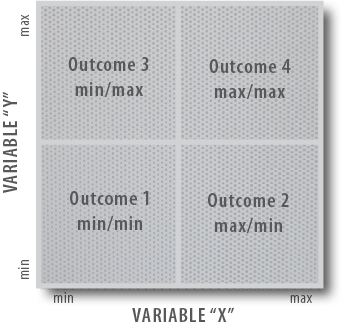When the variables of a problem are aligned, decision-making is relatively straight forward. But more often than not, decisions require sorting out competing interests and understanding consequences.
A simple, yet powerful tool for gaining insight into dueling interests, and their outcomes, is the 2×2 matrix. While at first this model may appear too obvious, its power becomes evident when two non-aligned variables are paired. The four quadrants of the matrix now encompass the spectrum of possible outcome trajectories.
Take the qualities that help organizations succeed. High performance is a universally sought outcome for organizations of all sizes, yet many fail to envision the dynamics of alignment and autonomy that can lead to better outcomes:

In design situations, the 2×2 can be employed to help owners and their design teams understand trade-offs between minimize and maximize outcomes. Depending on the variables, it is possible to find the “high performance” outcome in any one of the quadrants:

Charles Darwin identified change and the ability to adapt as the indispensable qualities of every successful species. Savvy organizations realize this is true to their survival as well. Yet, as this 2×2 shows, effective change is reliant on learning:

How will you spend your time today? The Stephen Covey Urgency vs Importance matrix provides some insight (our examples):

Peter Drucker said: “there is surely nothing quite so useless as doing with great efficiency that which should not be done at all.”

For a more in-depth look, see Lowy and Hood’s book, The Power of the 2×2 Matrix